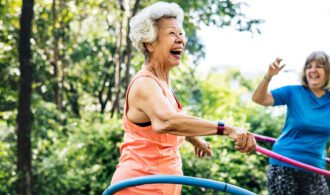12 Home Safety Tips for Seniors: Fall Prevention and More
As we age, maintaining a safe living environment becomes increasingly important to prevent accidents and ensure overall well-being. Among the various concerns for seniors, fall prevention takes center stage due to the potential for severe injuries. According to the National Council on Aging, falls are the leading cause of fatal and non-fatal injuries for older adults. Fortunately, with some practical adjustments and precautions, seniors can significantly reduce the risk of falls and create a safer home environment.
1. Clear Pathways and Declutter
Creating clear and unobstructed pathways throughout the house is a fundamental step in preventing falls. Remove any clutter, loose rugs, or unnecessary furniture that might impede movement. A clutter-free environment not only reduces the risk of tripping but also makes navigation easier for seniors using mobility aids like canes or walkers.
2. Adequate Lighting
Insufficient lighting can make it difficult for seniors to see obstacles and hazards. Install bright, energy-efficient LED bulbs in hallways, staircases, and frequently used areas to enhance visibility. Consider placing nightlights in bedrooms, bathrooms, and hallways to help seniors safely move around during the night.
3. Secure Handrails and Grab Bars
Handrails along staircases and in hallways provide essential support for maintaining balance. Ensure that these handrails are sturdy and well-anchored. Additionally, install grab bars in bathrooms, especially near toilets and inside showers, to prevent slips and falls. These simple additions can greatly enhance senior safety and confidence.
4. Non-Slip Flooring
Replace slippery flooring with materials that provide better traction, such as non-slip mats, rugs with rubber backings, or textured tiles. Secure loose carpets and rugs with double-sided tape to prevent them from moving and causing trips.
5. Bathroom Safety
The bathroom is a high-risk area for falls due to its wet surfaces. Place a non-slip mat outside the shower or tub to provide a stable surface. Consider using a shower chair or bench to reduce the risk of falls while bathing. Installing a raised toilet seat can also make it easier for seniors to sit down and stand up.
6. Furniture Arrangement
Arrange furniture to allow for easy movement and clear pathways. Avoid placing furniture in the middle of walkways or near doorways. Seniors with mobility aids should have enough space to maneuver comfortably around furniture.
7. Fall-Alert Systems
Invest in a fall-alert system that connects seniors to emergency services with the press of a button. These wearable devices can provide peace of mind to both seniors and their loved ones, ensuring help is readily available in case of an accident.
8. Kitchen Precautions
In the kitchen, store frequently used items within easy reach to prevent seniors from needing to climb or stretch. Use non-slip mats under rugs or around the sink area to prevent water accumulation. Keep the floor dry to avoid slips.
9. Regular Exercise
Physical activity plays a crucial role in maintaining strength, balance, and coordination. Encourage seniors to engage in exercises that improve their stability, such as gentle yoga, tai chi, or water aerobics. Consult a healthcare professional before starting any new exercise regimen.
10. Medication Management
Improper medication management can lead to dizziness and falls. Organize medications in a pill organizer to ensure they are taken correctly. Regularly review medications with a healthcare provider to address any potential side effects that might impact balance.
11. Vision and Hearing Checks
Regular vision and hearing check-ups are essential for identifying potential sensory impairments that could increase the risk of falls. Corrective lenses and hearing aids can significantly improve overall awareness of the surroundings.
12. Home Maintenance
Keep the home well-maintained to prevent hazards. Repair loose floorboards, handrails, and outdoor pathways promptly. Address any tripping hazards in the yard, such as uneven pavement or exposed roots.
Conclusion
Creating a safe living environment for seniors is essential for their well-being and independence. By implementing these home safety tips, you can significantly reduce the risk of falls and accidents, allowing seniors to enjoy a secure and comfortable living space. From decluttering pathways to installing handrails and staying active, each step contributes to a safer and happier life for seniors. By taking these precautions, you’re not just preventing falls; you’re also promoting a higher quality of life for your loved ones in their golden years.
Contact us here with questions about Generations’ independent living options.Book a tour at a Generations Community near you.



